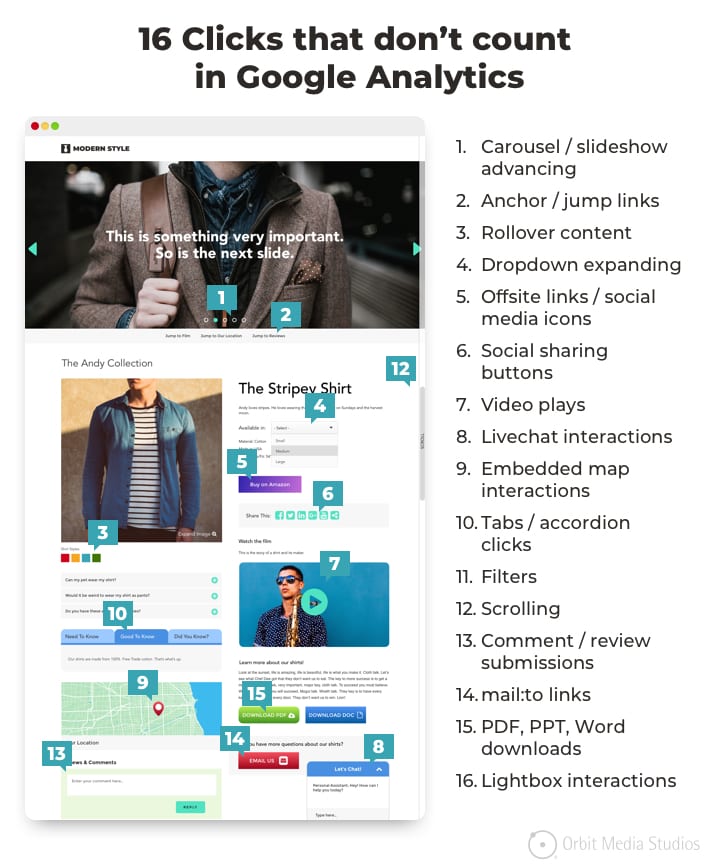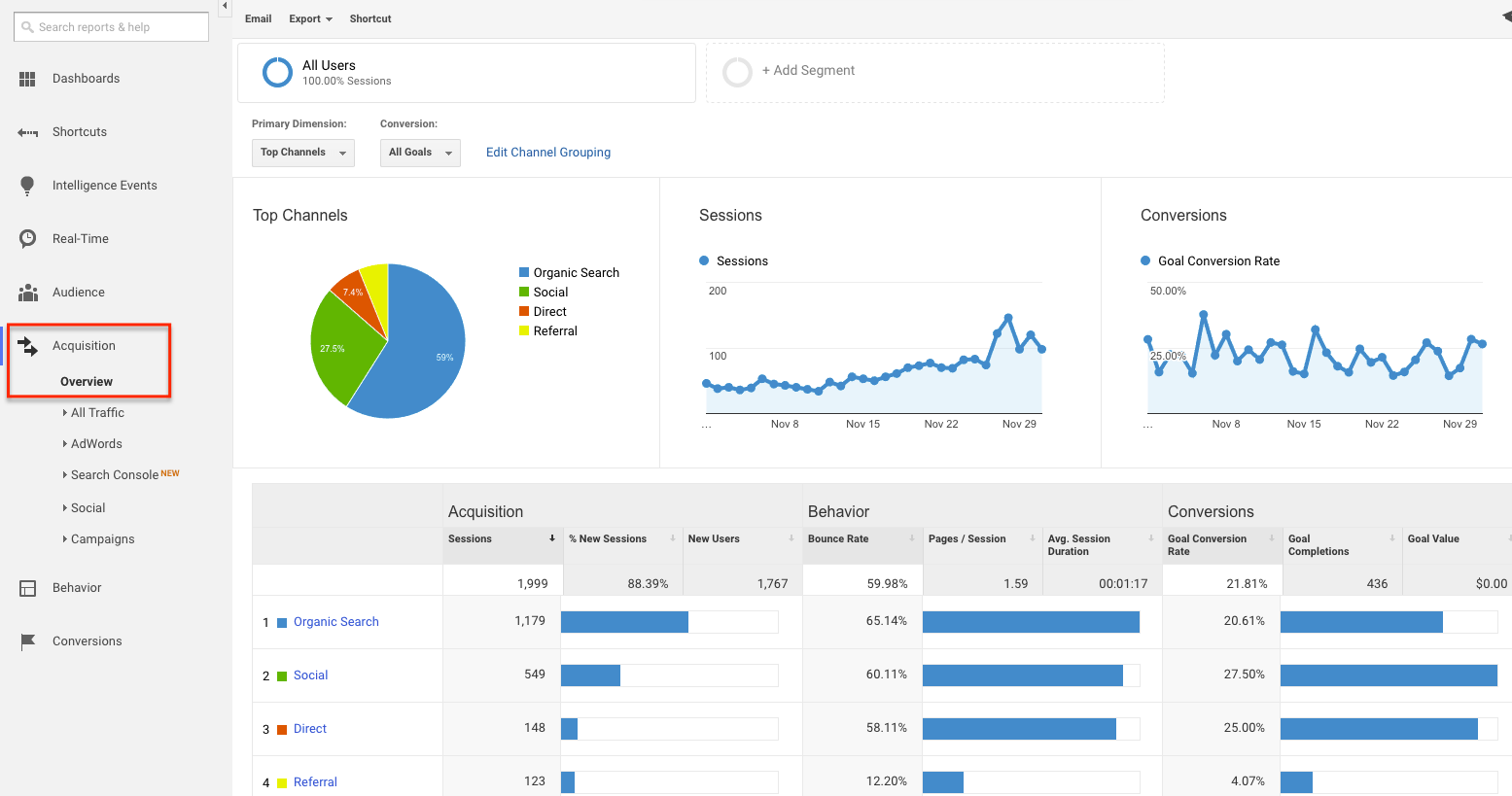Not known Facts About What Data Is Google Analytics Goals Unable To Track?
Wiki Article
The Basic Principles Of What Data Is Google Analytics Goals Unable To Track?
Table of ContentsThe Definitive Guide for What Data Is Google Analytics Goals Unable To Track?The Definitive Guide for What Data Is Google Analytics Goals Unable To Track?The 8-Minute Rule for What Data Is Google Analytics Goals Unable To Track?
Keep in mind you can amount to 100 residential or commercial properties, so combining in this means will certainly save you time and also migraines. Head to the 'Admin' area as well as choose the appropriate client account. Navigate to the 'Residential or commercial property' subsection and click 'Create Property'. You may need to demand Editor accessibility from your client if you do not already have it.When I first heard regarding Google Tag Manager (GTM) in early 2013, I felt a bit overwhelmed. What's the difference in between Google Analytics occasions and GTM events?
Google Analytics is an analytics device that helps you track and also examine exactly how individuals connect with your site and also app. Google Analytics is one of those tracking devices.
The primary purpose of Google Analytics is tracking information, saving it, and producing records concerning your site, for instance: exactly how several people visited your website yesterday? The primary means Google Analytics can track these customer communications is with the help of (also understood as) that must be placed on every page of your web site.
Fascination About What Data Is Google Analytics Goals Unable To Track?
A fine example here could be a type submission. So what do you do below? Ask the developer to add that kind entry monitoring tag to an internet site (straight in the code), right? But what takes place when there are tens or numerous interactions you are eager to track with Google Analytics? It will require a lot more programmer time (as well as they are always really busy!).In Google Analytics, occasions can be located in various reports, e. g., Interaction > Occasions. The information for this report is populated from Event strikes that are sent out from your internet site to Google Analytics servers.

For instance, when someone clicks a PDF link on your site, you can send this click as a Google Analytics occasion (and see it in your reports). P.S. Out of package, you will not see any type of events other than Container Loaded, DOM Ready, as well as Home window Loaded - What Data Is Google Analytics Goals Unable To Track?. To start seeing events, you need to have at least one trigger of that type made it possible for in the container.
Rumored Buzz on What Data Is Google Analytics Goals Unable To Track?

Because all Google Tag Supervisor events are inhabited in Data Layer, you can additionally ask your developer to fire personalized Google Tag Manager occasions (a. k.a. "Data Layer Events") - What Data Is Google Analytics Goals Unable To Track?. To summarize, the Google Tag Manager occasion is an interaction on your web site that is recommended you read spotted by GTM and also then put in the Information Layer (p
g., Google Analytics Event). Although the term Occasion is the very same in both Google products, in Google Tag Manager, a, while You will see several duplicating motifs if you read all the comments listed below this post. Among them is Google Analytics goals/conversions. How should one configure them with Google Tag Manager? Relating to the partnership between GTM and GA, Google Tag Manager is a method of information transport that sends out various interactions(page views, events, etc)over to Google Analytics. Exactly How does Google Analytics recognize which communications are more vital than others? You do that by configuring GA (not GTM). If you're dealing with Google Analytics 4, you need to visit Set up > Occasions as well as note one of the most vital occasions to you as conversions. Find out more here. Simply put, you inform GA that some communications(that aresent out to GA) are extra valuable to business. In general, you will require to get rid of the hardcoded GA codes from your web site and add the Google Tag Manager container code to more all web pages of the website. You will fire Google Analytics tags via Google Tag Supervisor. Your historic data will certainly not be shed, yet the migration can adversely influence your future information (if done improperly ). GTM is a tool that fires your monitoring codes based upon defined policies.
If you want much more specifics, here are the main points that must be stressed as soon as more when it comes to contrasting Google Tag Manager vs Google Analytics:. Either duplicate and paste the code straight into your internet site template or inspect your internet host, web site home builder or blog platform for a Google Analytics integration. The web site or mobile application you want to track: A distinct code site here added to your website that enables Google Analytics to track it, Goes to that turn right into clients or potential consumers: Shows where your website traffic came from, such as recommendations or web links from other websites, search engines, social media as well as e-mails, Amount of time a customer spends proactively seeing or running your internet site or app in the foreground.: Percent of visitors that view just a single page and after that leave.: Particular site visitor habits, such as when a site visitor clicks on an ad, watches or quits a video, downloads a data and also more.
Report this wiki page